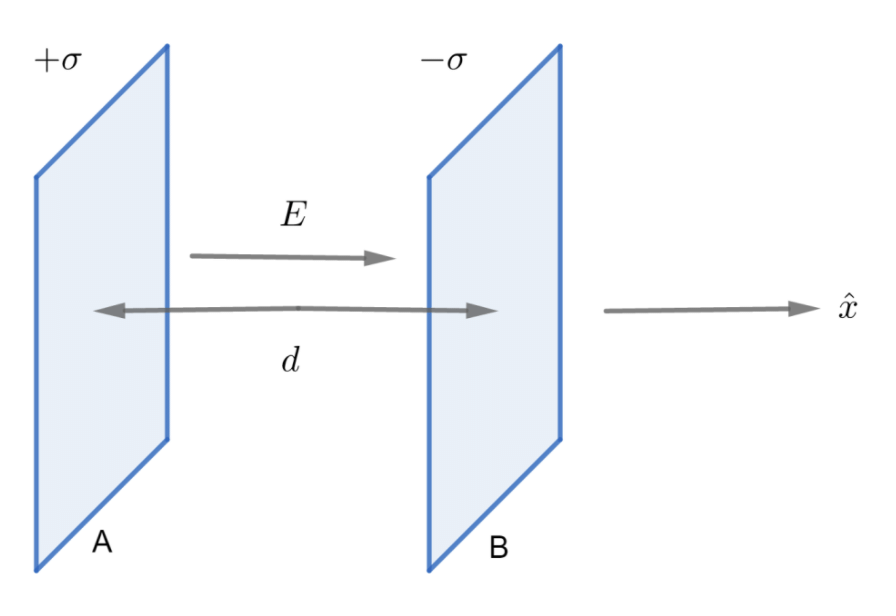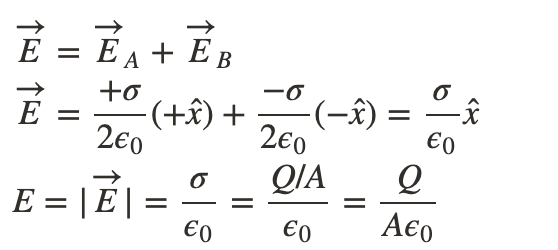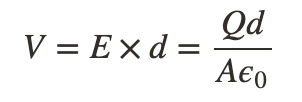Parallel Plate Capacitor | Physics for Airmen Group X - Airforce X Y / Indian Navy SSR PDF Download
What is a Parallel Plate Capacitor?
Parallel Plate Capacitors are formed by an arrangement of electrodes and insulating material or dielectric. A parallel plate capacitor can only store a finite amount of energy before dielectric breakdown occurs. It can be defined as:
When two parallel plates are connected across a battery, the plates are charged and an electric field is established between them, and this setup is known as the parallel plate capacitor.

Formula
The direction of the electric field is defined as the direction in which the positive test charge would flow. Capacitance is the limitation of the body to store the electric charge. Every capacitor has its capacitance. The typical parallel-plate capacitor consists of two metallic plates of area A, separated by the distance d.
The parallel plate capacitor formula is given by: C = kєºA/d
Where,
ϵo is the permittivity of space (8.854 × 10−12 F/m)
k is the relative permittivity of dielectric material
d is the separation between the plates
A is the area of plates
Derivation

Let the two plates be parallel each other each carrying a surface charge density +σ and −σ respectively. A is the area of the plates and d is the separation between them.
The electric field of a thin charged plate is given by  and is directed normally outwards from the plate. The total electric field between the two plates is given as
and is directed normally outwards from the plate. The total electric field between the two plates is given as

The potential difference between the two plates is

The capacitance is

Try Yourself!
|
201 videos|410 docs|280 tests
|
FAQs on Parallel Plate Capacitor - Physics for Airmen Group X - Airforce X Y / Indian Navy SSR
| 1. What is a parallel plate capacitor? |  |
| 2. What is the formula to calculate the capacitance of a parallel plate capacitor? |  |
| 3. How can the capacitance of a parallel plate capacitor be increased? |  |
| 4. Can the capacitance of a parallel plate capacitor be negative? |  |
| 5. What is the derivation of the formula for the capacitance of a parallel plate capacitor? |  |

















